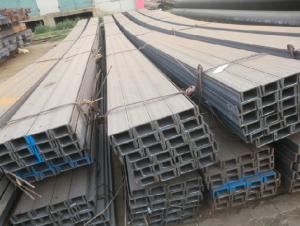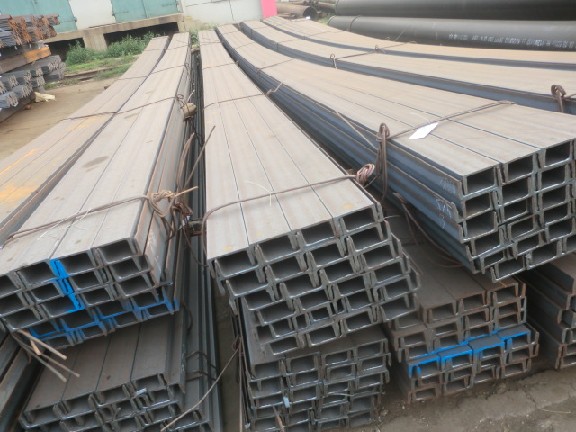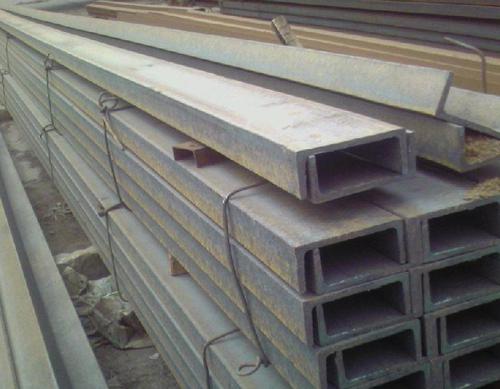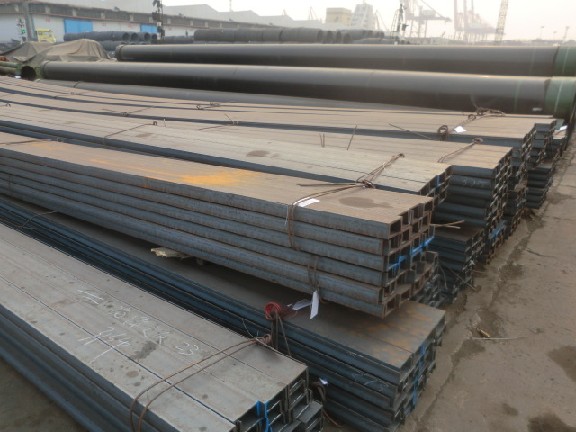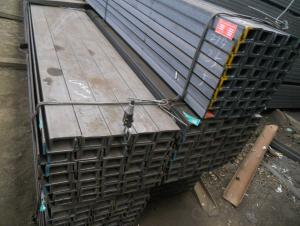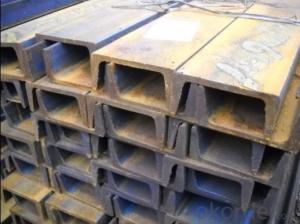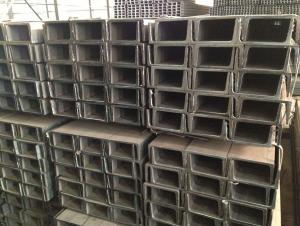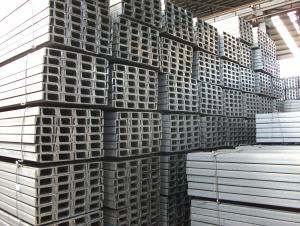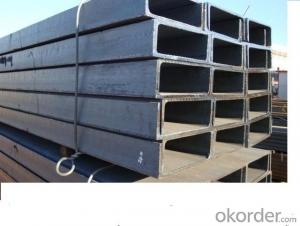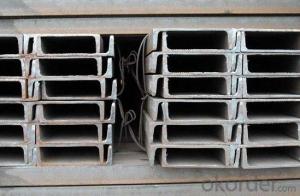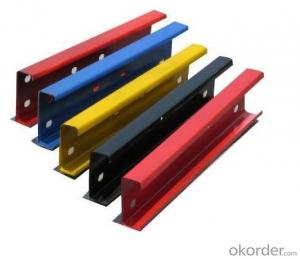Q235B GB707-808 Standard Steel Channels With High Quality
- Loading Port:
- China main port
- Payment Terms:
- TT or LC
- Min Order Qty:
- 25 m.t
- Supply Capability:
- 2000 m.t/month
OKorder Service Pledge
OKorder Financial Service
You Might Also Like
Product Description:
OKorder is offering Q235B GB707-808 Standard Steel Channels With High Quality at great prices with worldwide shipping. Our supplier is a world-class manufacturer of steel, with our products utilized the world over. OKorder annually supplies products to European, North American and Asian markets. We provide quotations within 24 hours of receiving an inquiry and guarantee competitive prices.
Product Applications:
Q235B GB707-808 Standard Steel Channels With High Qualityare ideal for structural applications and are widely used in the construction of buildings and bridges, and the manufacturing, petrochemical, and transportation industries.
Product Advantages:
OKorder's Q235B GB707-808 Standard Steel Channels With High Qualityy are durable, strong, and resist corrosion.
Main Product Features:
· Premium quality
· Prompt delivery & seaworthy packing (30 days after receiving deposit)
· Corrosion resistance
· Can be recycled and reused
· Mill test certification
· Professional Service
· Competitive pricing
Product Description:
Specifications of Hot Rolled Channel Steel:
We are definitely speciallizing in manufacturing and supplying channel steel as per japanese standard, which is characterised with high mechanical strength and competitive prices.
The steel u channel will be packed in bundle with steel wire at each end of every bundle and color marking in order to help the customer to recognize his goods more easily at sight.
And steel u channel could be loaded into 20ft or 40ft container, or by bulk cargo. If the weight of each bundle reaches less than 3.5 mt, the loading by break bulk cargo should be choosed. When the weight of each bundle reaches less than 3mt, the loading by container should be choosed.
As for the transportaion from mill to loading port, the truck will be usually used. And the maximum quantity for each truck is 40mt.
All in all, we could do in accordance with customer's request.
Trade terms: FOB, CFR, CIF
FAQ:
Q1: Why buy Materials & Equipment from OKorder.com?
A1: All products offered byOKorder.com are carefully selected from China's most reliable manufacturing enterprises. Through its ISO certifications, OKorder.com adheres to the highest standards and a commitment to supply chain safety and customer satisfaction.
Q2: How do we guarantee the quality of our products?
A2: We have established an advanced quality management system which conducts strict quality tests at every step, from raw materials to the final product. At the same time, we provide extensive follow-up service assurances as required.
Q3: How soon can we receive the product after purchase?
A3: Within three days of placing an order, we will begin production. The specific shipping date is dependent upon international and government factors, but is typically 7 to 10 workdays.
Images:
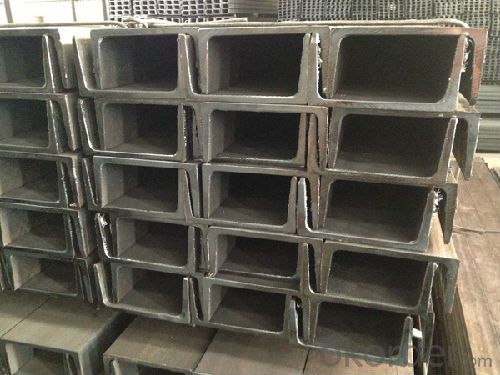
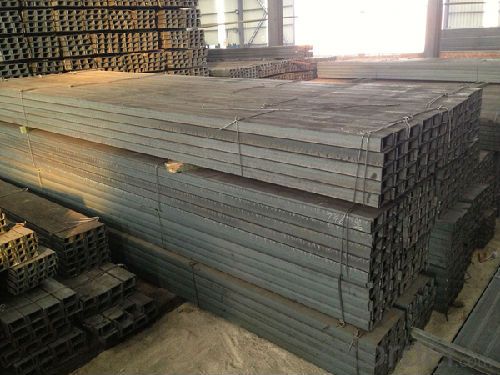
- Q: Is channel steel cold rolled or hot rolled?
- According to the theory of steel structure, it should be stressed by the channel plate, that is to say, the channel should stand rather than lie prone.
- Q: What is the square bevel washer used for channel steel?
- The inclination of the channel steel and the angle of the square bevel washer coincide with the standard.
- Q: How do steel channels contribute to load distribution?
- Steel channels contribute to load distribution by providing structural support and distributing the weight of the load evenly across the channel's length. These channels help to minimize stress concentrations and ensure that the load is evenly distributed to prevent any localized areas from bearing excessive weight.
- Q: Can steel channels be used in agricultural applications?
- Yes, steel channels can be used in agricultural applications. Steel channels are versatile and durable structural components that can be utilized in various farm-related settings such as barn construction, equipment storage, fencing, and livestock handling facilities. They provide strength and stability, making them suitable for withstanding the demands of agricultural operations.
- Q: Can steel channels be used in the construction of staircases?
- Yes, steel channels can be used in the construction of staircases. Steel channels are commonly used as stringers or supports for stairs due to their strength, durability, and versatility. They provide a strong structural framework for stairs and can be customized to fit various designs and dimensions. Additionally, steel channels offer excellent load-bearing capacity, making them suitable for both commercial and residential staircase construction.
- Q: What is the weight of steel channels?
- The weight of steel channels can vary depending on the size and thickness of the channel.
- Q: Can steel channels be used in the automotive manufacturing industry?
- Indeed, the automotive manufacturing industry can make use of steel channels. Given their strength, durability, and versatility, steel channels often serve as structural components in this sector. They find extensive application in chassis frames, suspension systems, and body structures. With exceptional load-bearing capabilities, steel channels can endure the demanding requirements of the automotive industry. Moreover, their ease of fabrication and welding renders them a favored option among automotive manufacturers.
- Q: What are the different welding techniques used for steel channels?
- Steel channels can be welded using different techniques, each with its own advantages and considerations. One commonly used technique is Shielded Metal Arc Welding (SMAW), also known as stick welding. SMAW involves using a consumable electrode coated in flux to create a shield around the weld pool and protect it from atmospheric contamination. This versatile technique can be used in various positions and is suitable for welding steel channels of different sizes and thicknesses. Another popular technique is Gas Metal Arc Welding (GMAW), also known as MIG (Metal Inert Gas) welding. GMAW uses a wire electrode that feeds through a welding gun, along with a shielding gas like argon or a mixture of argon and carbon dioxide. It offers high welding speeds and allows for continuous welding, making it efficient for welding long steel channels. Flux-Cored Arc Welding (FCAW) is similar to GMAW but uses a tubular flux-cored wire instead of a solid wire electrode. This wire contains a flux material that provides shielding gas and creates a slag to protect the weld pool. FCAW is often preferred for outdoor applications or when welds may be exposed to wind or drafts. Submerged Arc Welding (SAW) involves using a continuously fed electrode and a granular flux that covers the weld pool entirely. The arc is submerged under the flux during SAW. This technique is commonly used for welding thick steel channels or when high deposition rates are required. It provides excellent penetration and produces high-quality welds with minimal spatter. Tungsten Inert Gas Welding (TIG), also known as Gas Tungsten Arc Welding (GTAW), is a precise technique that uses a non-consumable tungsten electrode and a shielding gas like argon. TIG welding is often used for welding thin steel channels or when aesthetic appeal is important, as it allows for excellent control over the heat input and produces precise and clean welds. It's important to consider factors such as channel thickness, desired weld quality, available equipment, and specific application requirements when choosing a welding technique for steel channels.
- Q: Are steel channels suitable for marine applications?
- Yes, steel channels are suitable for marine applications. Steel channels are made from a strong and durable material that is resistant to corrosion, making them ideal for marine environments where there is constant exposure to saltwater. They can withstand the harsh conditions of the ocean, including high levels of moisture, waves, and wind. Additionally, steel channels offer excellent structural integrity and can provide support and stability for various marine structures such as piers, docks, and offshore platforms. They are also commonly used in shipbuilding and the construction of marine vessels. Overall, steel channels are a reliable and practical choice for marine applications due to their strength, corrosion resistance, and ability to withstand the demanding conditions of the marine environment.
- Q: How do steel channels contribute to the stability of a structure?
- Steel channels contribute to the stability of a structure in several ways. Firstly, they provide additional structural support by distributing the load evenly across the structure. The shape of the channel, with its flanges and web, helps to resist bending and twisting forces, preventing any potential collapse or deformation of the structure. Moreover, steel channels enhance the overall strength and rigidity of the structure. The high tensile strength of steel allows for the channels to bear heavy loads without buckling or warping. This added strength and rigidity help to maintain the structural integrity of the building, ensuring its stability during various external forces such as wind, earthquakes, or heavy loads. Steel channels also contribute to the stability of a structure by providing a stable base or foundation. They can be used as beams or columns to support the weight of the structure and transfer the load to the foundation. In this way, steel channels act as a strong and reliable support system, preventing any excessive movement or settlement of the structure. Additionally, steel channels offer versatility in design and construction. They can be easily fabricated into various shapes and sizes to suit the specific needs of the structure. This flexibility allows for efficient and cost-effective construction methods, ensuring stability without compromising on design aesthetics or functionality. In conclusion, steel channels play a vital role in ensuring the stability of a structure. By providing additional support, enhancing strength and rigidity, acting as a stable base, and offering design versatility, steel channels contribute to the overall stability and integrity of a building, making it safe and reliable for its intended purpose.
Send your message to us
Q235B GB707-808 Standard Steel Channels With High Quality
- Loading Port:
- China main port
- Payment Terms:
- TT or LC
- Min Order Qty:
- 25 m.t
- Supply Capability:
- 2000 m.t/month
OKorder Service Pledge
OKorder Financial Service
Similar products
Hot products
Hot Searches
Related keywords
